
Looking at Lucian Freud’s self-portraits, one observes the development and maturation of his craft. Open to experimentation with new techniques, pushing boundaries of composition, and paint application, he stated that he asked of his paintings, and his paint, to “astonish, disturb, seduce, convince.”
And, for Freud, it was always about the paint. It directed his work. “I want the paint to work as flesh,” he once said, according to artist Lawrence Gowing’s 1982 monograph. “As far as I am concerned, the paint is the person.”
Near 70 years of self-portraiture by the Berlin-born, British artist Lucian Freud is explored at London’s Royal Academy of Arts this winter in a series of more than 50 paintings and works on paper. Lucian Freud: The Self-portraits is the first exhibition to study the gradual change in the late artist’s self-portraiture, from his flat, linear and meticulously painted early works to the unflinching, confrontational fleshy masterpieces he produced in later years.
Painted at the age of 21, 1943’s Man with a Feather is Freud’s first self-portrait on record to be exhibited. The white feather refers to a love affair. The painting has a smooth, glossy surface. It was created with Ripolin enamel paint, applied with fine sable brushes, to show every small detail, yet hide the brush marks. Freud admired Picasso, who may have been the first to experiment with this commercial brand of house paint.
Denne historien er fra December 2019-utgaven av Artists & Illustrators.
Start din 7-dagers gratis prøveperiode på Magzter GOLD for å få tilgang til tusenvis av utvalgte premiumhistorier og 9000+ magasiner og aviser.
Allerede abonnent ? Logg på
Denne historien er fra December 2019-utgaven av Artists & Illustrators.
Start din 7-dagers gratis prøveperiode på Magzter GOLD for å få tilgang til tusenvis av utvalgte premiumhistorier og 9000+ magasiner og aviser.
Allerede abonnent? Logg på

Still life IN 3 HOURS
Former BP Portrait Award runner-up FELICIA FORTE guides you through a simple, structured approach to painting alla prima that tackles dark, average and light colours in turn
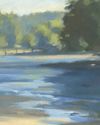
Movement in composition
Through an analysis of three masterworks, landscape painter and noted author MITCHELL ALBALA shows how you can animate landscape composition with movement
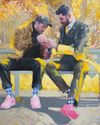
Shane Berkery
The Irish-Japanese artist talks to REBECCA BRADBURY about the innovative concepts and original colour combinations he brings to his figurative oil paintings from his Dublin garden studio

The Working Artist
Something old, something new... Our columnist LAURA BOSWELL has expert advice for balancing fresh ideas with completing half-finished work
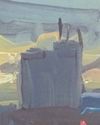
Washes AND GLAZES
Art Academy’s ROB PEPPER introduces an in-depth guide to incorporating various techniques into your next masterpiece. Artwork by STAN MILLER, CHRIS ROBINSON and MICHELE ILLING
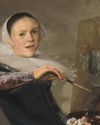
Hands
LAURA SMITH continues her new four-part series, which encourages you to draw elements of old master paintings, and this month’s focus is on capturing hands

Vincent van Gogh
To celebrate The Courtauld’s forthcoming landmark display of the troubled Dutch master’s self-portraits, STEVE PILL looks at the stories behind 10 of the most dramatic works on display
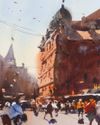
BRING THE drama
Join international watercolour maestro ALVARO CASTAGNET in London’s West End to paint a dramatic street scene
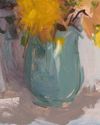
Serena Rowe
The Scottish painter tells STEVE PILL why time is precious, why emotional responses to colour are useful, and how she finds focus every day with the help of her studio wall

Bill Jacklin
Chatting over Zoom as he recovers from appendicitis, the Royal Academician tells STEVE PILL about classic scrapes in New York and his recent experiments with illustration